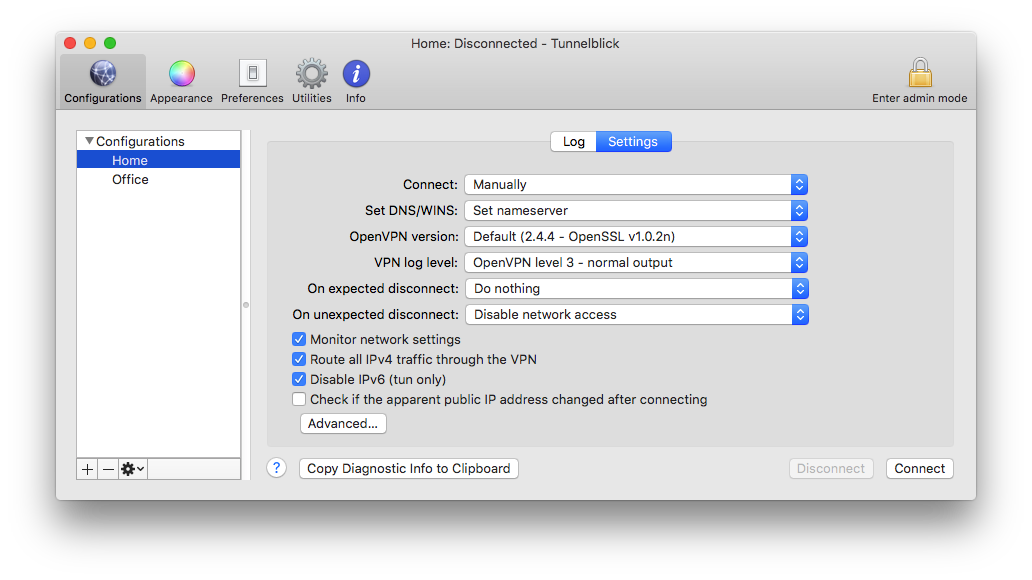

- #Os x server vpn setup how to
- #Os x server vpn setup upgrade
- #Os x server vpn setup download
- #Os x server vpn setup mac
Find the OpenVPN configuration files and choose:
#Os x server vpn setup download
Download ProtonVPN configuration files by logging into your ProtonVPN dashboard and selecting Downloads in the left navigation bar.ģ.

Note: This is not your ProtonVPN username or passwordĢ. ) If you already know your OpenVPN credentials, you can skip this step.
#Os x server vpn setup how to
(If you don’t know how, here’s our guide on how to find your OpenVPN username and password. Tunnelblick is a free, open-source generic VPN app for macOS that allows you to connect to our network via the OpenVPN protocol.ġ. If you use an earlier version of macOS, or you simply prefer to use Tunnelblick, read on…
#Os x server vpn setup mac
2Ī couple things I’ll note that I discovered while setting this up: Back to My Mac and the VPN Server are said to not play well together, since they use the same ports, but in more recent versions it looks like they can co-exist as long as you don’t log into your iCloud account in the Back to My Mac section of AirPort Utility. I’m not sure how much I’ll end up using this feature, but I can imagine some scenarios where it could come in useful.

Once the server was set up, configuring both my MacBook and my iOS devices to log into it was a snap. That does require a little bit of command-line know-how (though the above link will explain to you exactly what commands to issue and what to copy and paste). Beyond that, I followed this excellent how-to from Macminicolo, which walks you through the entire process of setting up OS X’s VPN server, including how to configure it to route all of your remote traffic through your local network (otherwise scenario number three above won’t really work). Setting up a VPN on the Mac is actually pretty easy–the most painful part was shelling out the $20 for OS X Server. So, for example, I can watch Netflix or Hulu while traveling abroad.
#Os x server vpn setup upgrade
That upgrade actually went seamlessly, so I moved on to my next project: updating to iCloud Photo Library. Given that El Capitan is about to come down the pike, it seemed like a good opportunity to finally switch over to Yosemite. It’s been running Mavericks since I set it up, as that was the newest OS release when I upgraded from my older Mac mini. The server is a Mac mini that’s set up for a few different things: It holds my entire photo library, works as a media center, keeps a copy of all my digital music, archives old files going back a decade or more, and fulfills some server tasks. In the midst of my many travels, I decided it would, of course, be the perfect time to do some maintenance on my home server. Server hijinks: Setting up your own VPN on OS X


 0 kommentar(er)
0 kommentar(er)
